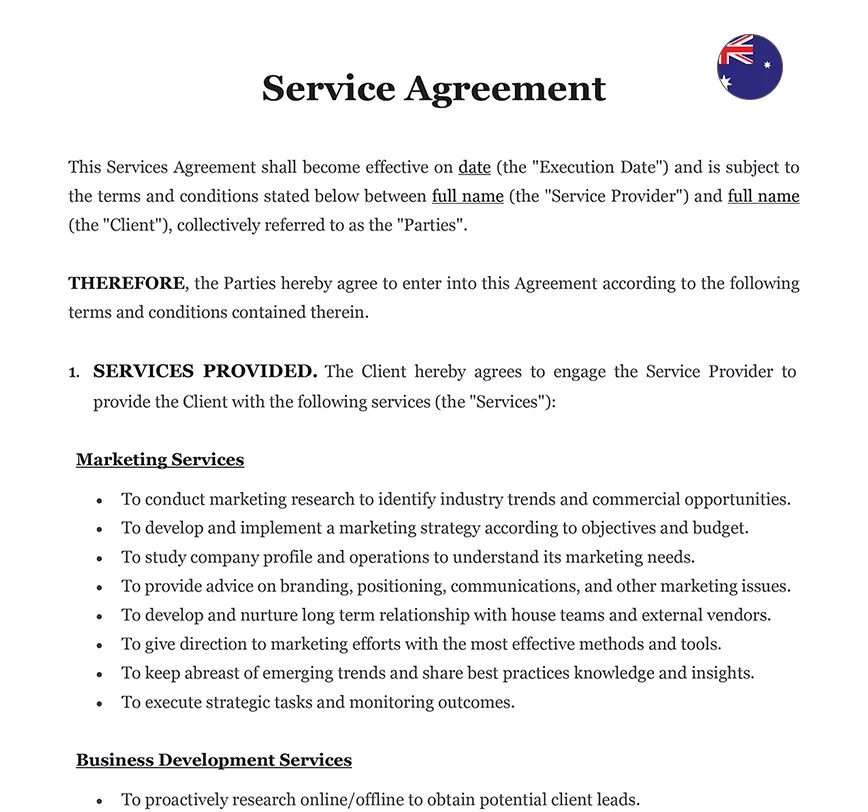The Importance of Client Service Contract
A service agreement is a critical legal document that establishes the terms and conditions of a service relationship between a provider and a client. This guide delves into the significance of crafting effective Client Service Contracts in Australia, ensuring that both parties’ interests are safeguarded and the service delivery is streamlined.
Understanding Client Service Contracts
Client Service Contracts define the scope and terms of the service provided.
1. Definition: A Client Service Contract is a legally binding document that specifies the terms under which services will be provided.
2. Types: These contracts can cover a range of services, including consulting, maintenance, marketing, and IT services.
3. Legal Framework: The enforceability of Client Service Contracts in Australia depends on precise drafting and adherence to applicable laws.
Essential Elements of a Client Service Contract
Including essential elements in a Client Service Contract ensures clarity and legal protection.
1. Parties Involved: Clearly identify the service provider and the client.
2. Scope of Services: Provide a detailed description of the services to be performed.
3. Payment Terms: Specify the payment terms, including the amount, schedule, and method.
4. Duration: Define the duration of the agreement, including start and end dates.
5. Responsibilities: Outline the responsibilities and obligations of both the service provider and the client.
Payment Terms and Conditions
Clearly defined payment terms help prevent disputes and ensure smooth transactions.
1. Fee Structure: Detail the fee structure, whether it’s a fixed price, hourly rate, or milestone-based.
2. Invoicing: Outline the invoicing process, including frequency and due dates.
3. Late Payments: Include provisions for late payments and any applicable penalties.
4. Reimbursements: Specify conditions for reimbursable expenses, if any.
Performance Standards and Deliverables
Setting performance standards and deliverables ensures quality and accountability.
| ➤ Performance Metrics: Define the metrics by which service performance will be measured. |
| ➤ Deliverables: List all deliverables with timelines for completion. |
| ➤ Acceptance Criteria: Establish the criteria for accepting deliverables. |
| ➤ Reporting: Include requirements for progress reports and status updates. |











